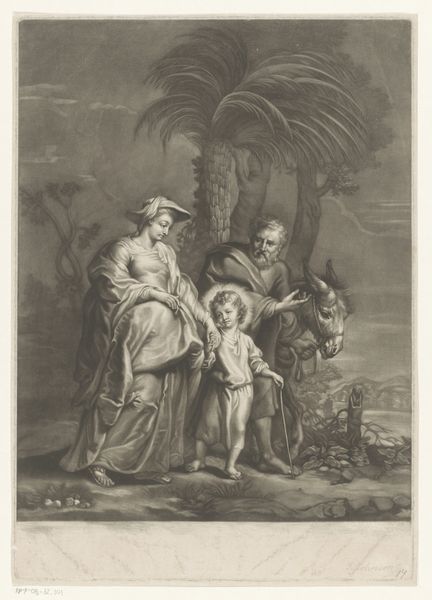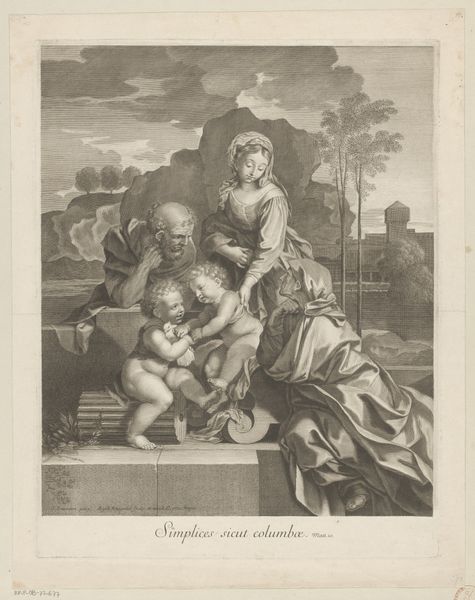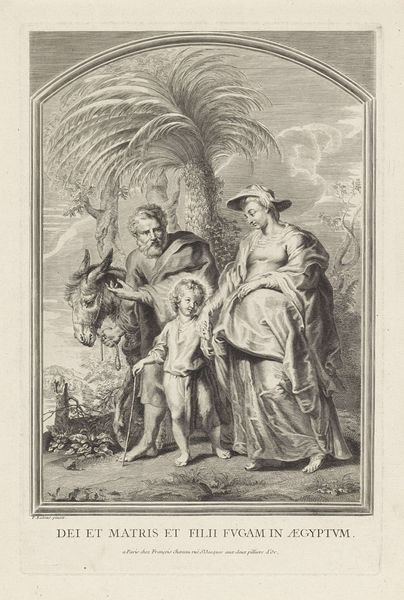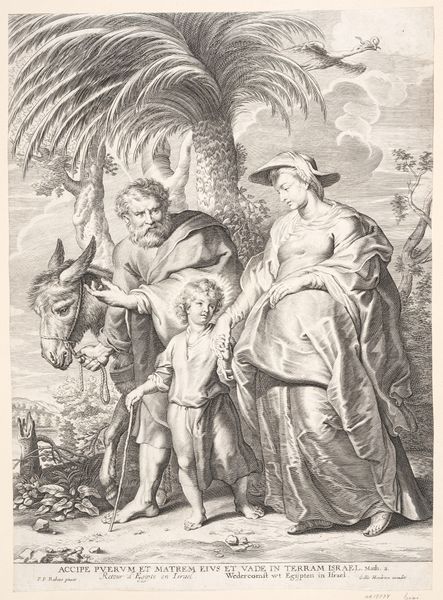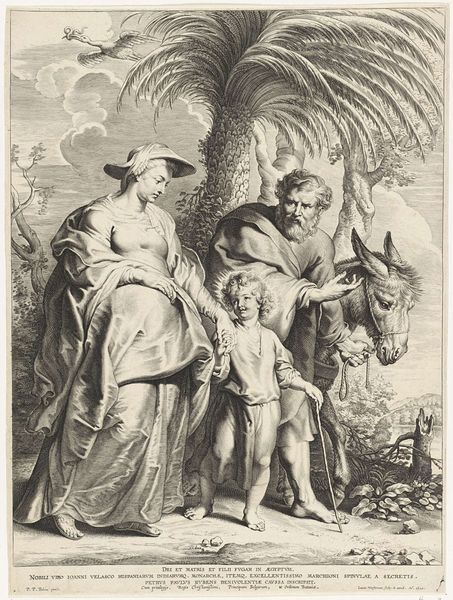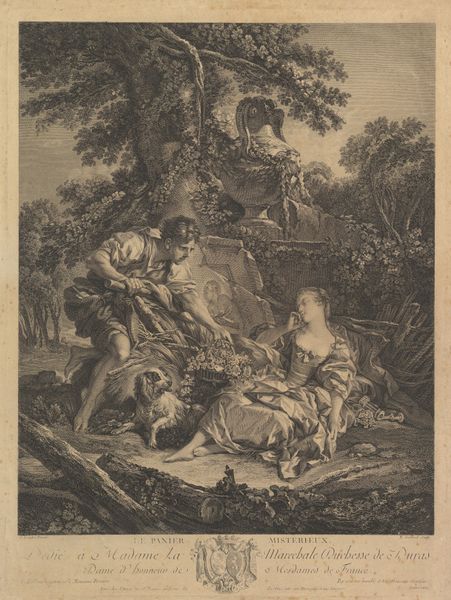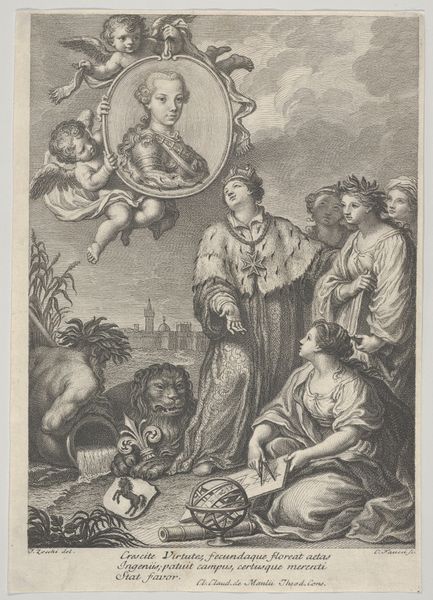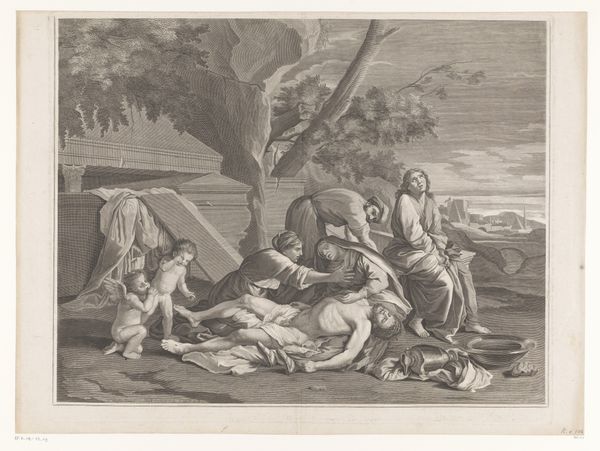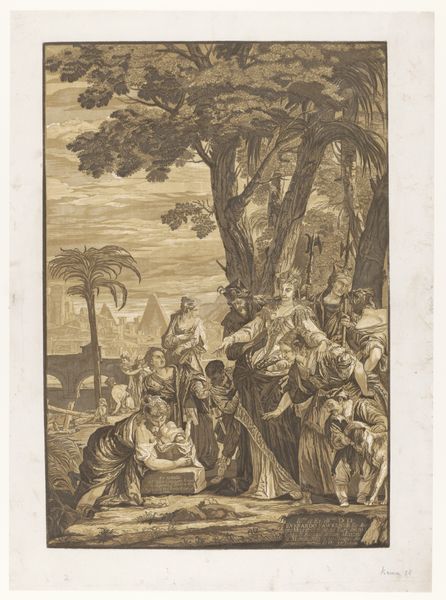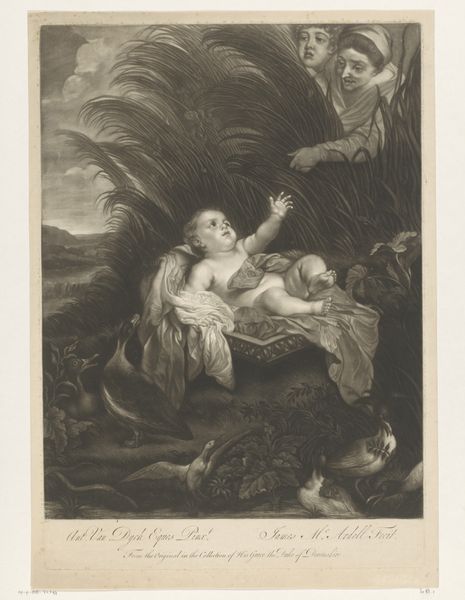
Dimensions: height 353 mm, width 250 mm
Copyright: Rijks Museum: Open Domain
Editor: Here we have J. Johnson's "Terugkeer uit Egypte," an engraving from between 1745 and 1794, meaning "Return from Egypt". It's quite a striking piece in its old engraving style. I’m immediately drawn to the composition; the family appears tired, perhaps pensive, and the surrounding landscape suggests a long journey. How would you interpret this work considering its historical context? Curator: The print’s creation coincides with the Enlightenment, a period marked by social upheaval and changing public roles for art. While seemingly a straightforward religious scene, let's not ignore the fact that printmaking makes art more widely accessible. Biblical narratives were hugely popular, acting as both moral instruction and as expressions of shared cultural values. But why do you think Johnson chose to represent this particular moment, the return? Editor: Maybe it has to do with this idea of coming home, the journey, as I mentioned. You said Enlightenment - maybe people related to the difficulties of their journeys? The ordinary public might have seen the Holy Family’s struggles as a reflection of their own lives and hardships? Curator: Exactly! The image subtly reinforces the sanctity of the family unit while perhaps drawing parallels to the viewer’s experiences, especially if many families were enduring displacements during that time. Consider the text beneath the image; a quote from the bible that perhaps speaks directly to their shared faith in dark times. What does the landscape suggest to you? Does it give a certain socio-historical nuance? Editor: It feels a little ambiguous, doesn’t it? The palm tree gives a sense of place, perhaps a promise of safety. It is perhaps too picturesque? Maybe pointing to the landscape itself being under the same public/political scrutiny during this era? Curator: Precisely, the idyllic backdrop is perhaps deliberately placed; it offers an idealised future under their beliefs, subtly prompting the viewers of this artwork to strive towards religiousness in a rapidly secularising Europe. Editor: That makes so much sense! It's fascinating to see how religious art can become a tool for shaping public perception during periods of social transformation. Thanks for showing me that, it changed how I looked at it.
Comments
No comments
Be the first to comment and join the conversation on the ultimate creative platform.
